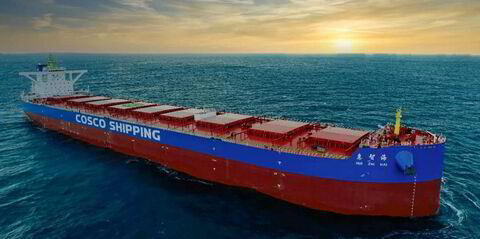Morgan Stanley’s abrupt exit from coverage of US shipping equities earlier this month came as a shock to many in the market. Few had seen the exit of Fotis Giannakoulis, the giant investment bank’s star shipping analyst, coming.
However, the warning signs should have been there for those who wanted to look. Morgan Stanley was the fifth investment bank to wholly or largely drop coverage in recent months after Credit Suisse, UBS, Seaport Global Securities and Maxim Group.
Yet while the axe has been falling across research and analysis positions, the deeper question is what does this wave of exits say about investment banks’ interest in shipping equities?
And, by extension, what are the possibilities for shipping companies to raise fresh funds from public markets now?
Of course, it is hard to gauge the plans of these institutions. Investment banks are not in the habit of posting public statements about such issues. Wariness about broadcasting commercially sensitive information runs deep, even in the world of garrulous sell-side analysts.
In the case of Maxim, days after the exit of analyst James Jang and the dropping of coverage of DHT Holdings, Genco Shipping & Trading, Nordic American Tankers and StealthGas, analyst Tate Sullivan picked up coverage of Seanergy Maritime.
With all due respect to Maxim, the motivations of Morgan Stanley are of far more significance to the shipping market. Some sources suggest the bank has been reaching out to executives of public companies, which hints at a continued commitment to place deals, but others say there is no clear indication of direction.
Morgan Stanley matters because of its scale and its ability to make deals and raise money for investors from initial public offerings. It played a lead role in Uber’s colossal $82bn listing earlier this month.
Deep truths
The big three US investment banks — Morgan Stanley, JP Morgan Chase and Goldman Sachs — earned 55% of the more than $400m generated by fees from technology IPOs in the US last year, and 38% of the total $1.9bn IPO fee pool, according to data from Refinitiv.
Since 2010, Morgan Stanley’s huge placing power has enabled it to be bookrunner on about 60% of US shipping IPOs and 80% of follow-on deals.
Yet the current boom in tech IPOs — including Lyft’s $24bn debut two months ago — cannot hide some deep truths.
A first is that despite the overall strength of most global stock markets over the last few years that have seen them hit record highs, the number of listed companies is falling — in the US at least.
In the early 1990s, there were around 7,000 companies on US exchanges. That had fallen to around 5,000 in the early 2000s, and now there are only about 3,500.
Poor freight markets may be most to blame for holding the market back ... the small market capitalisation and low liquidity of many shipping stocks is another fundamental barrier to the market winning more friends on Wall Street
In the light of that, it is unsurprising that the numbers of new listings are falling. Between 1980 and 2000, an average of 310 companies went public each year in the US, but that is down to an average of 110 since 2001.
For the shipping markets in particular, public companies face their own headwinds, some of which are driven by wider financial forces, but some of which are of their own making.
Contributing factors
It is often repeated that the US shipping IPO drought now stretches back four years to June 2015 and the listing of Gener8 Maritime. Globally, there were only three shipping IPOs last year that raised a modest $119m, according to Clarksons Research data.
The market in follow-on share offers has been active, with $3.6bn raised globally last year, but that is the lowest for at least four years.
Poor freight markets may be most to blame for holding the market back. Weak earnings and flimsy confidence in the outlook amid concerns over global growth and trade rows do not create an easy sales environment.
The small market capitalisation and low liquidity of many shipping stocks is another fundamental barrier to the market winning more friends on Wall Street. When only the biggest shipping companies are worth more than $1bn, very few funds will assign the sector money.
Added to that is the seeping poison of the sector’s reputation for relatively poor corporate governance standards, and the heightened investor risks that brings.
Taken together, it creates an environment where few shipowners or operators are looking to Wall Street to fund their plans. It is fortunate for the industry that other sources of capital exist, especially from private equity, as highlighted by Bain & Co’s influential recent Global Private Equity Report.

The past five years had seen a record amount of money raised, invested and distributed back to investors by private equity.
Hugh MacArthur, Bain’s head of global private equity, wrote: “We see fundamental shifts happening in capital markets that are likely to drive a long-term trend towards much larger private capital [and private equity] opportunities versus traditional public equity models."
He added that this ongoing movement will have seismic impacts for providers of capital, investors of that capital and for the companies owned by a widening variety of private models.
“It portends a future in which a much larger share of capital flows into private markets,” he wrote.
Public markets may not be dead, but their influence is waning.








